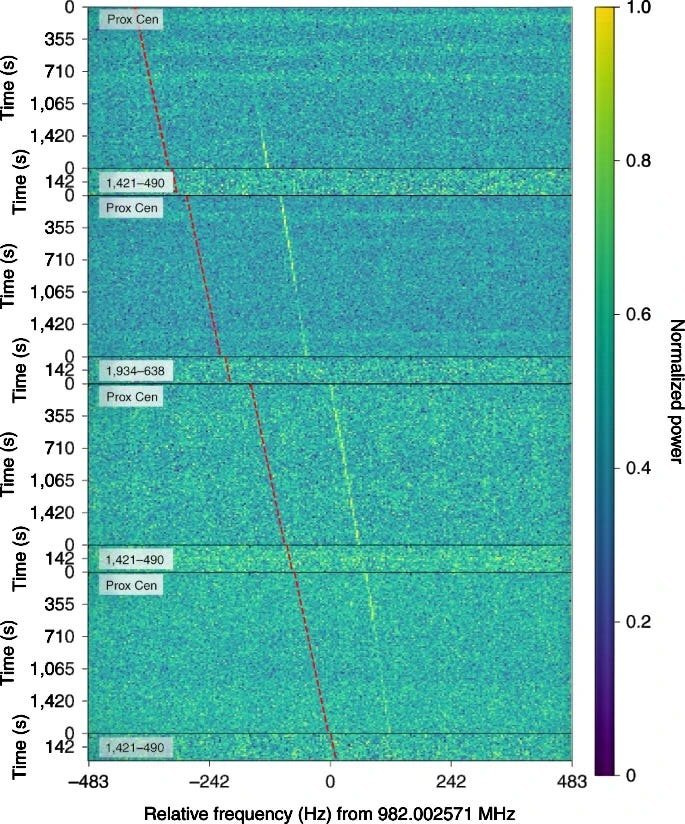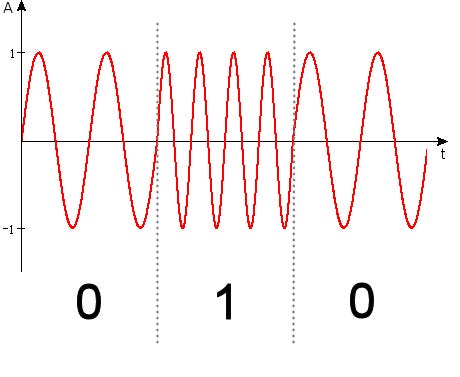Unraveling the Mystery of the Proxima Centauri Signal
Written on
Chapter 1: The Signal from Proxima Centauri
Recall the events of December 17, 2020. While the world grappled with uncertainties, the media buzzed about an unexpected discovery—not related to the pandemic or politics. A radio telescope in Australia detected a signal emanating from Proxima Centauri, our closest stellar neighbor. This sparked intrigue and speculation regarding the possibility of extraterrestrial intelligence. However, scientists have since uncovered the true nature of this signal.
The signal, labeled BLC1, exhibited characteristics typical of technosignatures. Modern technology emits a vast array of signals across multiple bandwidths, predominantly in the radio spectrum. These signals don't remain confined to Earth; they radiate into the cosmos. Researchers theorize that advanced extraterrestrial civilizations might also produce similar signals, which we could detect. Such indicators of distant intelligent life are known as technosignatures.

Previously, I discussed BLC1 in my article titled "We Found Aliens And They Live Next Door (Possibly)." For a comprehensive analysis of the signal, I recommend checking that out. However, here’s a brief overview of why BLC1 sparked thoughts of being a potential technosignature.
The signal originated from the direction of Proxima Centauri, presenting a narrowband frequency of 982 MHz. It was observed consistently over a 30-hour duration, with a slight frequency upsweep. The radio telescope employed filters to mitigate local interference (from radio stations, cell towers, etc.), which appeared to function correctly, and there were no satellites in view during the observation period.

The repeated nature of the observation, coupled with its narrowband quality and clean readings, led scientists to believe the signal might originate from the vicinity of Proxima Centauri. This star hosts an Earth-like exoplanet, Proxima b. The observed upsweep in the signal's frequency could suggest that it was emitted from this planet as it orbited its star—this phenomenon, known as the Doppler effect, could account for the frequency changes.
Yet, a crucial detail heightened scientists' interest: BLC1 was detectable only when focusing directly on Proxima. Off-source signals often indicate false readings, and the absence of such signals suggested authenticity.
But was this evidence of an intelligent civilization reaching out to humanity? The answer is likely no.

While Proxima Centauri b is comparable in size to Earth, it is far less hospitable. Proxima Centauri is a dim dwarf star, too faint to be seen with the naked eye. Proxima b orbits exceedingly close, even closer than Mercury to the Sun. This proximity results in Proxima b being tidally locked, with one hemisphere perpetually exposed to light and the other in constant darkness. Theoretically, a narrow band between these extremes could support temperate conditions. However, given the instability of dwarf stars, which can experience fluctuations in brightness and emit harmful radiation, Proxima b is likely uninhabitable.
Additionally, the signal failed to meet the criteria of a true technosignature. For a signal to convey meaningful information, it must fluctuate between two frequencies, representing binary data (1s and 0s). Instead, BLC1 was a continuous tone, devoid of information. This pattern doesn’t resemble our radio communications, nor should it represent those from intelligent beings.

This realization played a pivotal role in deciphering BLC1's true nature. The telescope's filters can isolate and eliminate human-made radio interference. They can distinguish signals from mobile masts and subtract those from the readings. However, what if a terrestrial radio source emitted a signal that didn’t conform to typical patterns?
Scientists analyzed past data for signals mathematically akin to BLC1 and discovered numerous similar signals. These appeared as interference but likely stemmed from the same source.
What could produce such a consistent, powerful monotone signal?

Consider a distorted guitar sound: the rich tones of the strings are lost, resulting in a synthetic monotone. Scientists propose that a radio tower may have experienced a similar distortion, generating the BLC1 signal. An amplifier within the tower may have malfunctioned or been miscalibrated, creating excessively powerful outputs that distorted the signal. This misrepresentation confused the telescope’s filters, leading them to mistakenly classify it as non-human technology, allowing for the detection of the BLC1 signal.
In conclusion, BLC1 does not indicate a message from our cosmic neighbors; it appears to be a malfunctioning radio tower. However, this incident is not without value. SETI and similar organizations can leverage BLC1 to refine their algorithms, enhancing future searches for genuine technosignatures. NASA has also advocated for new protocols to announce potential signs of extraterrestrial life, aiming to prevent misinterpretations and media sensationalism surrounding inconclusive evidence.
Remain optimistic about the possibility of extraterrestrial existence. Proxima b is merely one planet among countless others. We have only just begun our exploration for intelligent life beyond Earth. Who knows? The next signal we detect might indeed be a legitimate communication.
Chapter 2: Analyzing the Proxima Centauri Signal
The first video, "SETI Signal From Proxima Centauri Detected Last Year Finally Explained," delves into the analysis of the BLC1 signal, offering insights into its origins and implications for the search for extraterrestrial life.
The second video, "SETI Detected a Strange Radio Signal From Proxima Centauri," explores the initial excitement surrounding the discovery and the subsequent investigation into its true nature.